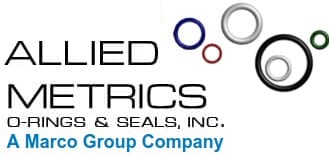Prevents metal-to-metal contact between pistons/rods & bores/glands, and absorbs transverse loads. Filled PTFE material gives good load capacity with low friction and stick-slip-free operation. Protects critical sealing lips from contamination and dieseling effects. Cost-effective, and allows designers freedom in hardware material selection. Higher static loads are permissible.
Technical Description
PTFE is a plastic that offers high chemical resistance, low and high temperature capability, resistance to weathering, low friction, electrical & thermal insulation, and “slipperiness”.
General Properties
PTFE Mechanical properties are often enhanced by adding fillers (see paragraph below). It has excellent thermal and electrical insulation properties and a low coefficient of friction. PTFE is very dense and cannot be melt-processed — it must be compressed and sintered to form useful shapes.
Filled Grades
PTFE’s mechanical properties can be enhanced by adding fillers such as glass fibers, carbon, graphite, molybdenum disulphide, and bronze. Generally, filled PTFE’s maintain their excellent chemical and high temperature characteristics, while fillers improve mechanical strength, stability, and wear resistance.

